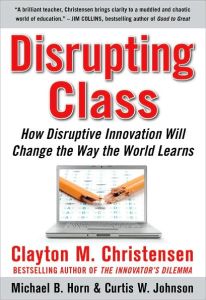
Disrupting Class
How Disruptive Innovation Will Change the Way the World Learns
Recommendation
The very real value of this useful and, at times, pleasantly surprising book comes from the way the authors apply their expertise in innovation to the field of education. By approaching public education’s crisis with new eyes – and conceptualizing education as a product or service like any other – Clayton M. Christensen (The Innovator’s Dilemma), Michael B. Horn and Curtis W. Johnson provide insights that escape the tired loops of argument that often define discussions about public education. These writers’ obvious willingness to look in new directions for learning innovation is matched by their genuine concern for everyone involved in education. However, they do seem a bit idealistic, as they focus so strongly on the pedagogical and conceptual aspects of education that they seem to skim over other concerns, like logistics and budgets. The authors acknowledge the legal monopoly governing public education without really addressing the social weight and inertia of such a monopoly. In fact, they seem to believe that positive disruption is almost inevitable. getAbstract recommends this thoughtful book to anyone interested in social change and education, and – not tangentially – in how new technologies affect societies.
Summary
About the Authors
Clayton M. Christensen is the Cizik Professor of Business Administration at Harvard Business School, and the author of The Innovator’s Dilemma and The Innovator’s Solution. Michael B. Horn co-founded the Innosight Institute. Curtis W. Johnson served as chief of staff to the governor of Minnesota and was an early champion of charter schools.
























Comment on this summary